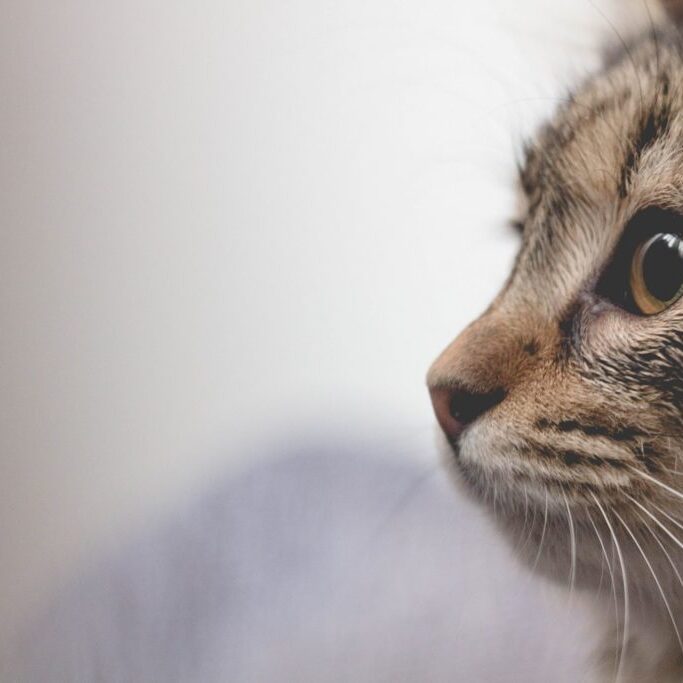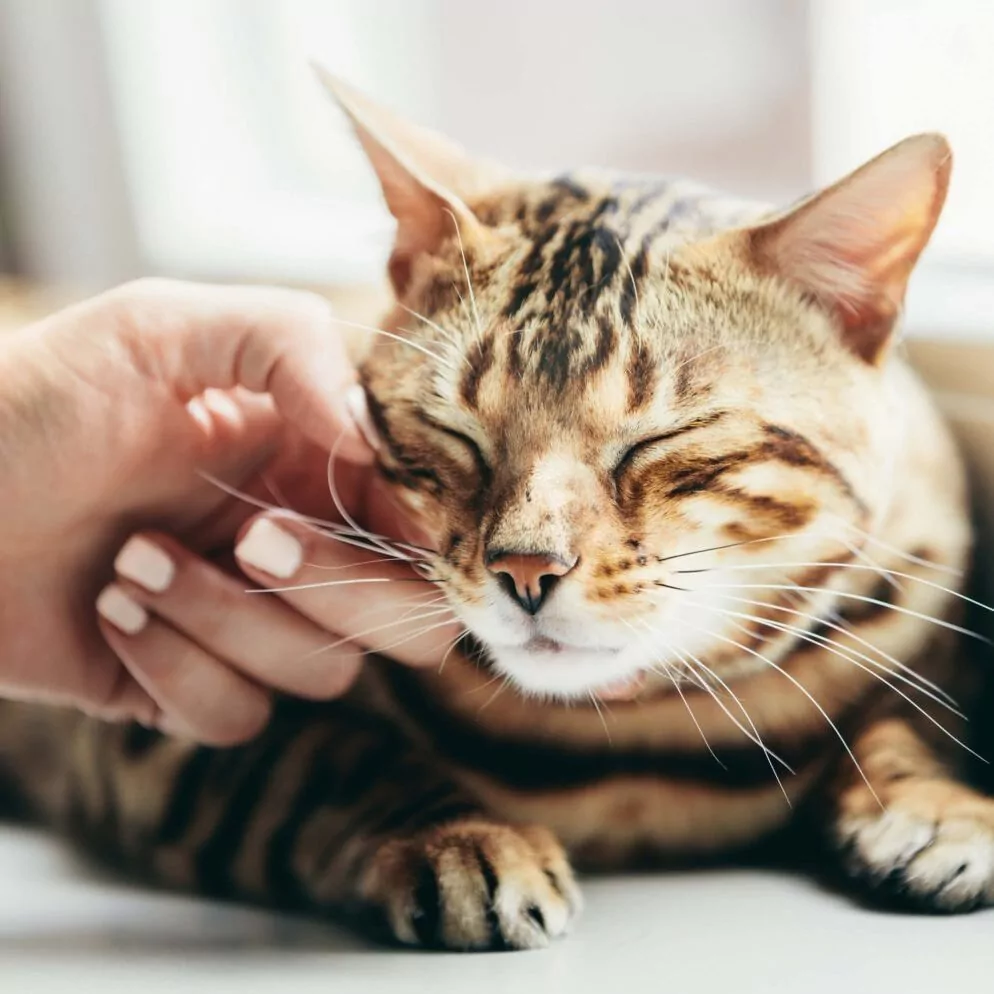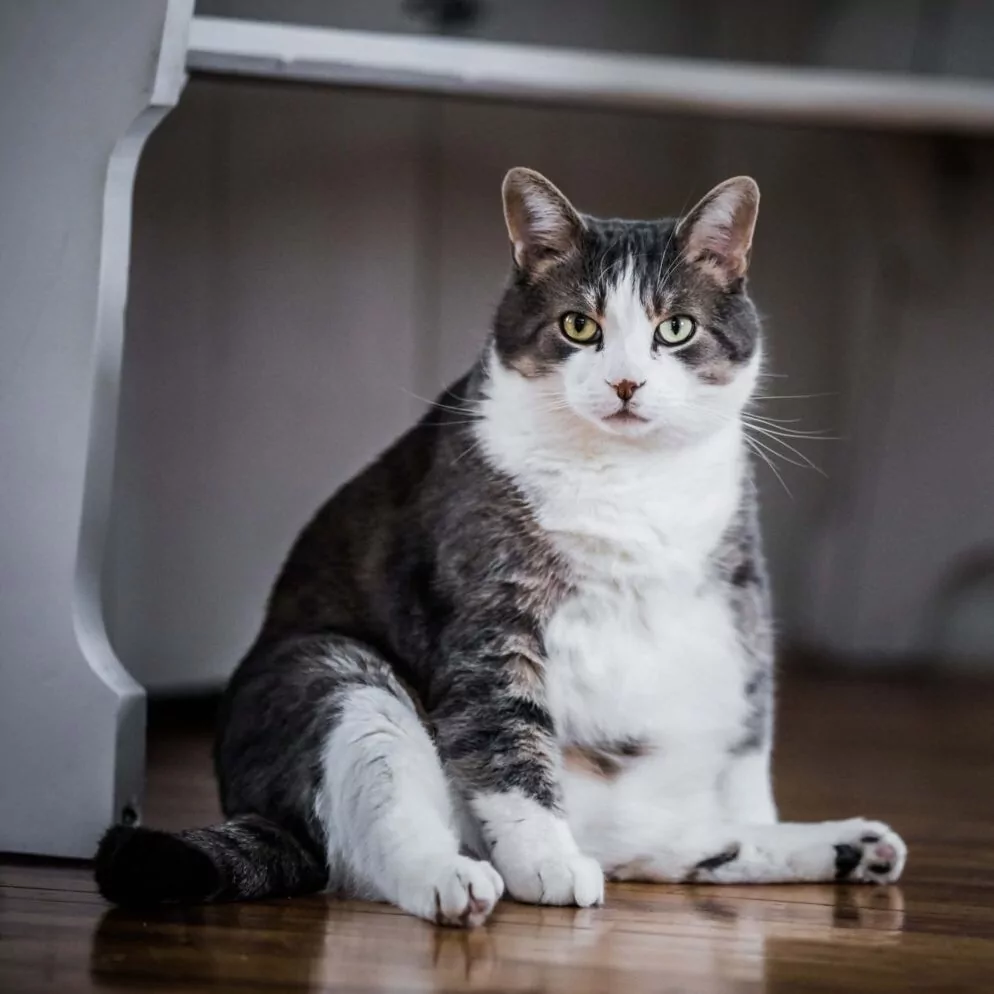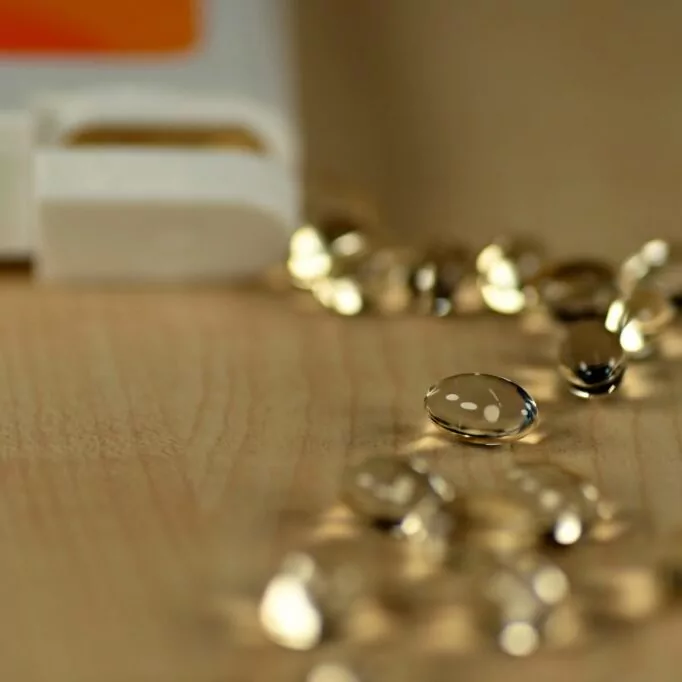Behavior & Symptoms
Why Does My Cat Sneeze?

If cats could blow their noses, the world might be a better place, says Elaine Wexler-Mitchell, DVM, DABVP, who has had a feline practice for 30 years and has seen a lot of sneezing cats in that time. “Cats wouldn’t have all that congestion and snarfing and snoring that some do.”
Cat sneezes can be delicate or dramatic, a single sneeze or a series at rat-a-tat speed. They spray our face with droplets of discharge or wipe their nose with a paw when they’re done. Tiny kitten sneezes leave us gasping from cuteness overload but frequent feline sneezing, especially when accompanied by greenish or yellowish discharge, can leave us worried or frustrated.
What is a sneeze, why do cats sneeze, and when is it serious? Here’s what to know.
Sneeze Mechanics
We’ve all felt it: that little tickle or itch that causes our nose to twitch and then that violent (or sometimes delicate) expulsion of breath through our nose and mouth, hurtling droplets of mucus and irritating particles from nasal passages into the air.
Whether human or cat, the nose is the primary path through which inhaled air travels to and from the lower airways. It’s lined with nasal epithelial cells, which can become irritated by such things as allergens, irritants and viral particles.
The irritation stimulates nerve endings, activating a brain reflex that controls muscles in the head and neck. The vocal cords close, pressure builds up in the chest, the vocal cords suddenly open, and boom! The pressurized air flows up the respiratory tract, expelling the irritants in its wake and, in the process, any infectious particles as well.
What Causes Cats to Sneeze?
Herpesvirus. That’s the one-word answer to 90 percent of sneezing cats.
Herpesvirus takes many different forms. A species-specific version (feline herpesvirus type 1), also known as feline viral rhinotracheitis, or FVR for short, affects cats and only cats, both domestic and wild. Young kittens, with their not-ready-for-prime-time immune systems, are particularly prone, especially if they enter crowded shelters or other environments where they’re exposed to sneezing cats.
That’s how FVR spreads: direct contact with virus particles, spewed out in the saliva and eye and nasal discharge of an already infected cat. Those particles can also contaminate objects such as food and water dishes, bedding, and other items. (Fun fact: objects that can carry infection are called fomites.)
It’s like kids going to kindergarten and all being thrown in a room together, breathing on each other, transmitting stuff to each other,” Dr. Wexler-Mitchell says. “The stress of being in a new environment, being around different people, handling, that can all alter the immune system and make the kitten more sensitive and susceptible to picking up an upper respiratory virus.”
What about vaccines? While components of a feline distemper vaccine usually include one or more vaccines for upper respiratory diseases such as FVR and calicivirus, they aren’t preventive.
“While they may give the recipient some immunity, it usually isn’t going to keep them from getting it,” says Drew Weigner, DVM, DABVP, past president of EveryCat Health Foundation and the first veterinarian to become board-certified in feline practice, in 1995. “What I tell people is ‘Even though they may not prevent your cat from getting one of these diseases, it will make it less likely and it will probably make it less severe.’”
And herpesvirus sticks around. Once a kitten or cat acquires it, it’s there for good.
“The herpesvirus doesn’t go away, so they can have recurring infections later in life and it’s the same infection they got years ago,” Dr. Weigner says.
In most cases, the infection lies dormant, posing no problem to the average healthy cat, but emotional or physical stress can bring it roaring back to life. Stresses can range from owners leaving town for a weekend, the advent of a new baby or another pet, a change in routine, or physical illness such as diabetes or kidney disease, especially as cats age.
Often the recurrence is mild and departs on its own, with a quick “See ya; bye.” A few cats have more frequent recurrences, which may or may not require treatment, depending on their severity. And in rare instances, FVR is the guest who just won’t leave—ever.
Other Causes of Sneezing
What about the other 10 percent of sneezing cats? Cats are sensitive to perfumes and fragrances in the environment, whether from the volatile compounds in scented cat litter, laundry detergent, or cleansers or from the Kenzo Jungle Le Tigre you spritz on every morning.
Allergies can cause cats to experience mild rhinitis—inflammation of the nasal passages—which leads to sneezing. Allergies aren’t common in cats but if their sneezing is seasonal or occurs only at certain times, they may be reacting to irritants such as pollen, cigarette or wildfire smoke, or other allergens carried on the wind.
“If you’ve ever seen a picture of pollen, it looks very much like the Covid virus,” Dr. Weigner says. “Many times they’re circles or ovals with lots of little spikes on them. Those spikes are pretty irritating, as you can imagine.”
And if you live in an area prone to wildfires, you may notice your cat sneezing in response to smoke and ash in the air. Airborne irritants can also cause cats to reverse sneeze, which looks and sounds scary, but isn’t, really.
Cats in the throes of a reverse sneeze may look or sound as if they’re choking or having trouble breathing. Their necks extend and they make a snorting sound that may last for several seconds. What’s happening is that your cat is trying to remove irritants from the back of the throat. Fortunately, reverse sneezing is not an emergency and is less common in cats than in dogs. The only time your veterinarian should see your cat for reverse sneezing is if it is persistent, suggesting that a foreign body may be the culprit. Otherwise, try stroking your cat’s throat to stop the snort.
But generally, once pollen, dust, smoke or other environmental irritants disappear, so does your cat’s sneezing, reverse or otherwise.
Cats may also sneeze in response to other viral infections, such as calicivirus; chlamydial infections caused by a bacterial organism called Chlamydophila felis; and certain fungal infections such as Cryptococcus. None of those are common and oftentimes they respond to treatment.
Sneezing is almost never a result of primary bacterial causes, by the way. “It isn’t impossible to have them, but 99 times out of 100, it’s secondary to some other cause,” Weigner says. For instance, a viral infection can be severe enough to change the respiratory tract in a way that allows a normal population of bacteria to overgrow. In that instance, antibiotics can help to control the symptoms, but they rarely will cure the cause of sneezing.
Dental disease isn’t commonly associated with sneezing in cats but it’s something to consider, especially if your middle-aged to older cat has severe dental disease. An abscessed tooth can cause infection to invade the sinuses, resulting in sneezing and nasal discharge, Weigner says. “We see it every now and then, so if you have a cat who suddenly starts sneezing and has really bad dental disease, it’s something to think about.”
Cats who enjoy sniffing grass can find themselves suddenly sneezing uncontrollably from a blade of it up the nose. Or sometimes they nibble on a blade of grass, swallow it, and then vomit it up. In the process, it becomes stuck in the nasal passage, Wexler-Mitchell says.
Weigner recalls a case early in his career, when a client brought in his outdoor cat, saying she had inhaled a blade of grass. Weigner was skeptical, given the small size of cat nares (nostrils) but he took the cat to the treatment room, lightly sedated her, looked in her nose, but saw nothing. “When I opened her mouth to look in the back of her throat, she started sneezing violently in my face,” he says. “As I backed up, I saw a tiny green spot in one nostril.” Grabbing a forceps, he pulled a three-inch blade of grass from her nose and she immediately stopped sneezing. The client’s response: “I told you it was a blade of grass.”
Finally, cats can develop tumors or masses in the nasal passages that result in sneezing. Nasal polyps, which are benign, can occur, typically in young cats. They are uncommon but easy to treat. Nasal lymphoma is more commonly seen in middle-aged or older cats and is much more serious. “While they can respond to treatment, the prognosis is generally not good for those cats,” Weigner says.
When to See the Veterinarian
Most often, veterinarians will tell you not to wait if you think there’s something wrong with your cat, but that’s not necessarily the case with sneezing. Oftentimes, it’s safe to take a wait-and-see stance.
Is your cat sneezing occasionally and producing a small amount of clear or possibly reddish-brown discharge but otherwise eating well and behaving normally? If the answer is yes, it’s safe to wait a couple of days to see if the sneezing goes away on its own, Weigner says.
If sneezing continues for more than two days and discharge turns a nasty yellowish or greenish hue, combined with fever or a lack of appetite or activity, your cat needs to see the veterinarian.
What’s the Diagnosis?
This is one instance where your veterinarian may simply recommend treating your cat symptomatically rather than running a lot of tests that may or may not turn up an answer. If a cat’s sneezing becomes chronic, though, X-rays—also known as radiographs—tend to be most rewarding in terms of determining whether something more serious is going on, such as a tooth abscess, fungal infection, or tumor. A radiograph can help you and your veterinarian decide whether it’s worth doing more tests. “If you see something along the lines of a tumor or fungal infection, then doing nasal biopsies and cultures would be appropriate,” Weigner says.
Your cat’s age can also be a factor in sussing out the source of sneezing. Remember that stress can jump-start long inactive viral infections. Diseases are physically stressful, so if your aging cat suddenly starts sneezing, testing for an underlying condition such as diabetes or kidney disease is worth considering.
Treating or Managing Sneezing
Face it: There’s no cure or treatment specifically for sneezing. Viruses don’t respond to antibiotics, and throwing antibiotics at a viral infection only increases the risk of antibiotic resistance in the future—when your cat might really need them. For basic short-term cases, the best thing you can do is provide supportive care by keeping the cat hydrated and eating well.
However, in more severe cases of chronic sinusitis, antibiotics may be warranted. That’s because bacterial infections can be a secondary complication when sneezing is caused by a virus, fungus, tumor, or dental disease. In those cases, antibiotics can reduce sneezing dramatically—at least until the cat completes the course of antibiotics. Then they’re sneezing again unless the underlying cause has been dealt with.
For cats with allergies, antihistamines may help. Their effectiveness varies by individual cat, but when they work, they can be used long-term in some cats.
Antiviral treatments such as interferon and famciclovir that are in use in human medicine have been used in cats with some success. Another is Polyprenyl Immunostimulant, approved by the USDA for treatment of feline rhinotracheitis. “Those are all potentially drugs that don’t have a lot of side effects, that can have antiviral properties,” Dr. Wexler-Mitchell says. Of course, their effectiveness is related to how easy it is to medicate a particular cat. If the medicine doesn’t go down, it won’t do any good.
Because of their potential for side effects, steroids are a last-ditch, short-term effort, used primarily to relieve symptoms in cats with severe cases. “Cats are much more resistant to side effects of steroids than people or dogs are,” Weigner says, “but the bigger problem is that chronic use of steroids for upper respiratory infections will often make them worse. You use them very selectively only in very severe cases when they just can’t breathe and they feel horrible.”
Tender Loving Care
There are also things you can do at home to treat your cat’s symptoms. One is to use pediatric nasal saline in the nostrils for ongoing sneezing. That helps to keep mucous membranes and nasal passages moist, Wexler-Mitchell says. And keeping a clogged nose clean helps improve appetite by ensuring the cat can smell food—an essential element of a good appetite.
A humidifier also helps. Fill it with plain water and clean or replace filters regularly to prevent bacterial growth. “It can provide some symptomatic relief and it isn’t going to hurt anything,” Weigner says. (Avoid using essential oils or Vicks VapoRub in humidifiers or vaporizers.)
The next time your cat walks demurely up to you, then sneezes explosively into your face, after you groan and wipe off the spray, take time to appreciate the power and efficiency of the feline respiratory system.
Did you find this helpful? Share it!
About VetScoop
Pets make our lives better. At VetScoop, we’re on a mission to return the favor by giving you access to trustworthy, science-based information so you can provide the best possible care for your pets.
Related Articles We Think You'd Like





